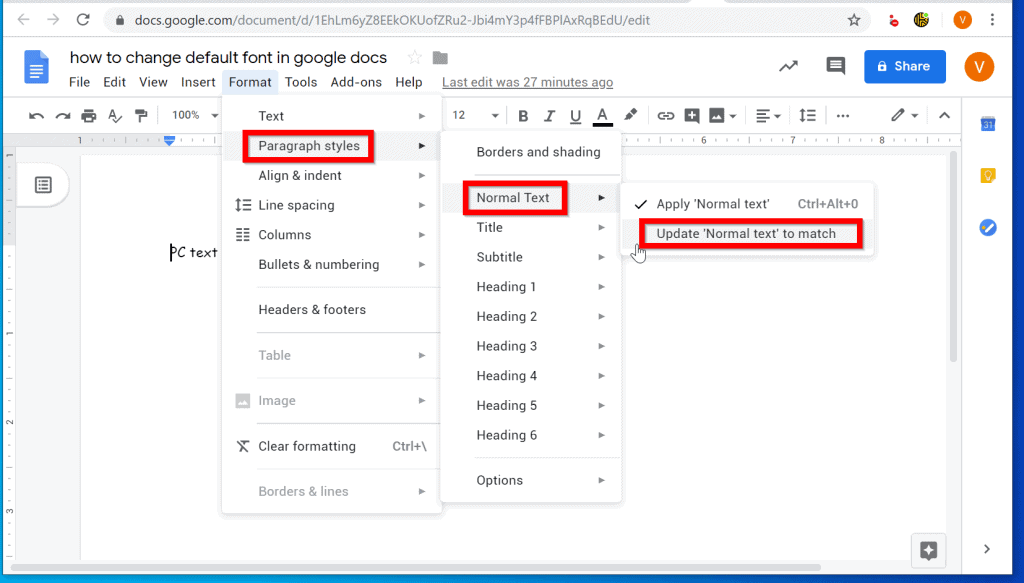

In the Google Docs app on both Android and iOS, text either wraps lines as it does in a browser or reflows with a bit of margin on both the right and left side.

How to display larger text in Google Docs mobile apps For example, on a Windows system "Press F11 to exit full screen" appears near the top of the screen. Again, a message will display that tells you how to exit this display mode. This adjustment hides browser tabs and system items, such as the system tray or taskbar. This hides system elements, as well as Chrome tabs and other elements, to maximize the number of lines in a Google Doc displayed on screen. Select the vertical three-dots menu, then the four corner-indicators icon to make Chrome full-screen. The page resizes to fit the width of your browser ( Figure A). Change the zoom setting with the drop-down menu from 100% to Fit. On most systems, with the browser maximized, this leaves relatively large margins. SEE: G Suite: Tips and tricks for business professionals (free PDF) (TechRepublic) How to display larger text in Google Docs in desktop Chromeīy default, a new Google Doc displays at 100% zoom in Chrome. For other adjustments you might make that affect overall system appearance and display settings, check out How to adjust your settings to make your screen easier to read. Note: The following changes only affect how text displays in Google Docs. The following adjustments will make your document look larger in Google Docs in Chrome on the web, as well as in the Google Docs apps on iOS (on both iPhone and iPad) or Android. With just a few tweaks, you can make the text display larger, without any adjustment to the actual font size. Arial, the default font, remains widely used for both digital displays and printed pages.


The default size typically produces lines that are relatively readable, with between 80 and 100 characters per line. When you create a new Google Doc-either in a browser or in a Google Docs mobile app-the default font size and font are 11 and Arial, respectively.


 0 kommentar(er)
0 kommentar(er)
